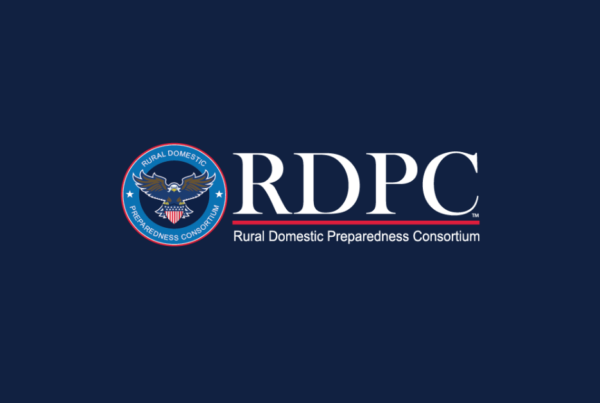
Curtis Lavarello, executive director of the School Safety Advocacy Council, talks about new and emerging issues in school safety at the 2011 Rural School Safety and Technology conference.
For more photos from the event, click below:
http://www.flickr.com/photos/centertech/sets/72157626099765651/
Just because you may live in a small and rural school district in small-town or suburban America, that’s no excuse for thinking violent incidents—some potentially fatal—will not happen in your schools or communities.
With school violence on the rise and bullying a growing phenomenon in many of the nation’s schools, law enforcement, school resource officers, and school administrators must be prepared to prevent and respond to today’s top school safety threats.
More than 100 representatives from the law-enforcement community and school personnel from 13 states across the nation received critical school safety training at the 2011 Rural School Safety and Technology Conference, held March 3-4 at The Center for the Rural Development in Somerset.

Sean Burke, president of School Safety Advocacy Council, addresses attendees at the 2011 Rural School Safety and Technology conference.
For the first time, these two groups—on the frontlines of school safety—were brought together under one roof at a national event to discuss how they can be more proactive in preventing and responding to school safety threats on school campuses all across America.
“We all must work together to make our schools safer and protect our children,” Lonnie Lawson, president and CEO of The Center said. “This conference, which included presentations from some of the nation’s leading experts in school safety, gave law-enforcement officers and school officials the training and tools they need to better protect our schools and communities.”
Lawson was presented a Presidential Citation by the School Safety Advocacy Council for recognizing the need for such a conference and helping bring the national event to rural America.
Sean Burke, president of School Safety Advocacy Council, applauded The Center and Lawson for having the foresight to begin a discussion on school safety issues with law-enforcement community and school administrators.
“For Mr. Lawson to recognize there is a need in this community, and then to go out, especially in these tough budget times, and arrange for this conference to be provided tuition-free for attendees, that speaks well for The Center and a lot about Mr. Lawson’s character, “Burke said. “People who live here in this county and in this region, and their children, are a lot safer because of Mr. Lawson.”
On the final day of the conference, U.S. Congressman Harold “Hal” Rogers (KY-05) was recognized for his work on school safety and continuous efforts to reduce school violence and substance abuse.

Curtis Lavarello, at right, executive director of the School Safety Advocacy Council, presents U.S. Congressman Harold "Hal" Rogers (KY-05), second from left, with 2011 School Safety Award. Standing beside Rogers is Lonnie Lawson, president and CEO of The Center for Rural Development.
Curtis Lavarello, executive director of the School Safety Advocacy Council, presented Rogers the 2011 National School Safety Award in a special awards presentation for helping to stem the tide against substance abuse, a growing problem in schools and communities nationwide.
Rogers launched Operation UNITE (Unlawful Narcotics, Investigations, Treatment, and Education) in 2003 to combat substance abuse in his home district in Southern and Eastern Kentucky, and continues to be a national leader speaking out against the dangers of drug abuse.
The conference, sponsored by The Center, the National Law Enforcement and Corrections Technology Center (NLECTC) Small, Rural, Tribal and Border Regional Center (SRTB-RC) and the School Safety Advocacy Council, included discussions on some of the top relevant topics on school safety issues making today’s headlines.
“School safety is not limited to socio-economically depressed areas,” according to Dave Mather, executive director of SRTB-RC, one of the Public Safety programs operated by The Center. “The pressures that students, teachers, and families deal with are often triggers that set students off and create violence in a school setting. That’s not unique to large cities.”

More than 100 law-enforcement officers, school safety officers, and school administrators attended the 2011 Rural School Safety and Technology conference March 3-4 at The Center in Somerset.
All across the nation in both rural America and urban cities, school bullying is on the rise, according to Det. David Kamilieter of the Scottsdale, Ariz. Police Department.
Kamilieter, also senior instructor for the School Safety Advocacy Council, called school bullying one of the most prevalent school safety issues facing students, teachers, administrators, and nation’s schools.
“We used to deal with the typical bully through discipline and, may be, police involvement,” Kamilieter said. “Now, school bullying has reached a new level. We are seeing root causes of school violence directly attributed to bullying.”
Lavarello agreed.
With increased use of Internet technology, he said, cyber-bullying extends well beyond the classroom and school grounds, continuing after the final school bell has sounded.
“We are urging school districts to become more familiar with technology and how students are communicating today,” Lavarello said. “We are also asking school districts to make sure their entire staff is familiar with all aspects of bullying, and that they have a comprehensive policy in place to address school bullying.”
School Resource Officer Dane Gilman of the Cheney, Wash. Police Department, said he plans to share information he received at the conference with his department and 3,500-student school district where he works.
“It is always valuable to see what other agencies around the country are doing to enforce school safety,” said Gilman, who traveled 2,000 miles to attend the national event. “I’m looking for ideas, safety-oriented measures, on how to make our schools safer.”

Dr. Hector Garcia, director of Miami-Dade Criminal Justice Institute, said school safety is a community issue and encouraged attendees to get community leaders involved in the effort.
Dr. Hector Garcia, director of Miami-Dade Criminal Justice Institute and one of the conference speakers, said forming community partnerships is essential for developing and implementing school safety initiatives.
“This is a community issue,” he said. “In order to succeed, we need to form partnerships with everyone in the community from faith-based organizations, civic groups, police groups, government entities, and teacher associations.”
When you bring people together to work together on a common goal, like at this conference, Garcia said, “you give them the tools they need to succeed.”
“(The conference) reassured me that we are doing the right thing in our school district,” attendee Tim Bobrowski, director of pupil personnel and support services for Oswley County School District in Booneville, Ky., said. “We are already doing a lot of the school safety measures they talked about at the conference.”
“Events like this bring people together as a training activity, to network and talk, and see what resources are available to support them,” Michael O’Shea, law enforcement program manager for the U.S. Department of Justice’s NLECTC system, added. “I was glad to be a part of it.”
For more information about the conference, contact The Center for Rural Development at 606-677-6000 or visit centertech.com to view video presentation of the awards ceremony and interviews with conference presenters and some of the attendees.




